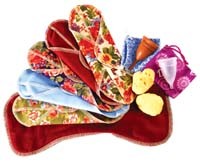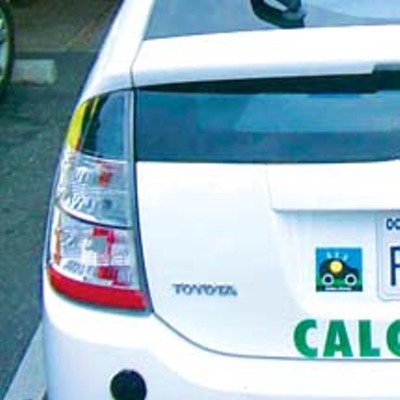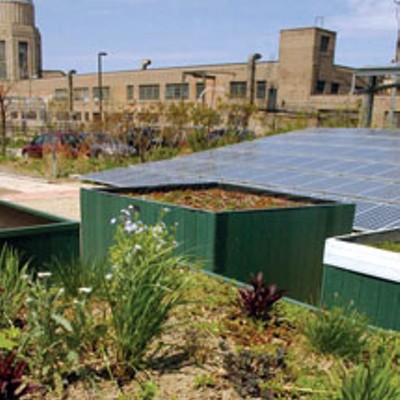Safe. Period.
Helping the environment during that time of the month

PHOTO COURTESY OF GETTY IMAGES
Safe, reusable cotton pads, sea sponges, and menstrual cups can help women save money and the environment.
[
{
"name": "Air - MedRect Combo - Inline Content 1",
"component": "11490391",
"insertPoint": "3",
"requiredCountToDisplay": "1",
"parentWrapperClass": "fdn-ads-inline-content-block"
},{
"name": "Air - MedRect Combo - Inline Content 2",
"component": "11490392",
"insertPoint": "7",
"requiredCountToDisplay": "5",
"parentWrapperClass": "fdn-ads-inline-content-block"
},{
"name": "Air - MedRect Combo - Inline Content 3",
"component": "11490393",
"insertPoint": "12",
"requiredCountToDisplay": "9",
"parentWrapperClass": "fdn-ads-inline-content-block"
}
]
Untitled Document
Are there environmentally friendly alternatives to
tampons and sanitary pads?
Women of ancient cultures couldn’t buy feminine hygiene products at the supermarket or drugstore chain, so they improvised, fashioning them instead of various natural and biodegradable materials — from papyrus and wool to grasses and vegetable fibers. Modern women, however, have relied on a variety of disposable products that create significant after-use waste and can also be dangerous to their health. A typical American woman will use — and discard — as many as 16,000 tampons and their applicators over the course of her lifetime. The numbers for disposable sanitary pads run about twice as high. A 1998 study conducted by waste consultant Franklin Associates concluded that 6.5 billion tampons and 13.5 billion sanitary pads, plus their packaging, were ending up in U.S. landfills or sewer systems each year. Meanwhile, volunteers from the non-profit Ocean Conservancy collected more than 170,000 tampon applicators along American coastlines during a study conducted over a two-year period in 1998 and 1999. On the health front, the sterile look of feminine hygiene products does not betray the fact that the chlorine dioxide used to whiten them can “theoretically generate dioxins at extremely low levels,” according to the U.S. Food and Drug Administration. Although the chlorine bleaching of tampons and pads has become considerably safer since the early 1990s, before which the process released some 250 different organochlorines into the environment and delivered a product laden with dioxin, the U.S. Environmental Protection Agency says that no safe level for dioxin exposure exists. Dioxin is 10 times more likely to cause cancer than was believed in 1994, says the EPA, and a lifetime of exposure to tampons, in particular, can mean a significant accumulation of toxins in a woman’s body and many noncancer effects, including birth defects and developmental delays. Additionally, tampons, because they interrupt the natural flow of blood, can facilitate bacterial growth and cause infection. To address both the health and environmental issues associated with feminine products, a number of innovative companies offer alternatives. GladRags, Natracare, Lunapads, Many Moons, and Pandora Pads all make cotton pads and other reusable products free of toxic substances. Jade and Pearl shapes natural sea sponges to fit a woman’s body, absorbing flow and likewise steering customers away from throwaway products made of bleached synthetic fibers.
“The Keeper” is a reusable rubber cup designed to catch menstrual flow; its maker also sells a silicone version called the “Moon Cup” for those who are sensitive to rubber. Such products can last as long as 10 years before needing replacement and are approved by the U.S. FDA and Health Canada. Many of these healthier and environmentally friendly (and less costly) alternative products are available online, as well as on the shelves of natural foods markets across North America.
For more information: GladRags, www.gladrags.com; Natracare, www.natracare.com; Lunapads, www.lunapads.com; Many Moons Alternatives, www.manymoonsalternatives.com; Pandora Pads, www.pandorapads.com; the Keeper, www.keeper.com; Jade and Pearl, www.jadeandpearl.com.
Send questions to Earth Talk, care of E/The Environmental Magazine, P.O. Box 5098, Westport, CT 06881 or e-mail [email protected].
Women of ancient cultures couldn’t buy feminine hygiene products at the supermarket or drugstore chain, so they improvised, fashioning them instead of various natural and biodegradable materials — from papyrus and wool to grasses and vegetable fibers. Modern women, however, have relied on a variety of disposable products that create significant after-use waste and can also be dangerous to their health. A typical American woman will use — and discard — as many as 16,000 tampons and their applicators over the course of her lifetime. The numbers for disposable sanitary pads run about twice as high. A 1998 study conducted by waste consultant Franklin Associates concluded that 6.5 billion tampons and 13.5 billion sanitary pads, plus their packaging, were ending up in U.S. landfills or sewer systems each year. Meanwhile, volunteers from the non-profit Ocean Conservancy collected more than 170,000 tampon applicators along American coastlines during a study conducted over a two-year period in 1998 and 1999. On the health front, the sterile look of feminine hygiene products does not betray the fact that the chlorine dioxide used to whiten them can “theoretically generate dioxins at extremely low levels,” according to the U.S. Food and Drug Administration. Although the chlorine bleaching of tampons and pads has become considerably safer since the early 1990s, before which the process released some 250 different organochlorines into the environment and delivered a product laden with dioxin, the U.S. Environmental Protection Agency says that no safe level for dioxin exposure exists. Dioxin is 10 times more likely to cause cancer than was believed in 1994, says the EPA, and a lifetime of exposure to tampons, in particular, can mean a significant accumulation of toxins in a woman’s body and many noncancer effects, including birth defects and developmental delays. Additionally, tampons, because they interrupt the natural flow of blood, can facilitate bacterial growth and cause infection. To address both the health and environmental issues associated with feminine products, a number of innovative companies offer alternatives. GladRags, Natracare, Lunapads, Many Moons, and Pandora Pads all make cotton pads and other reusable products free of toxic substances. Jade and Pearl shapes natural sea sponges to fit a woman’s body, absorbing flow and likewise steering customers away from throwaway products made of bleached synthetic fibers.
“The Keeper” is a reusable rubber cup designed to catch menstrual flow; its maker also sells a silicone version called the “Moon Cup” for those who are sensitive to rubber. Such products can last as long as 10 years before needing replacement and are approved by the U.S. FDA and Health Canada. Many of these healthier and environmentally friendly (and less costly) alternative products are available online, as well as on the shelves of natural foods markets across North America.
For more information: GladRags, www.gladrags.com; Natracare, www.natracare.com; Lunapads, www.lunapads.com; Many Moons Alternatives, www.manymoonsalternatives.com; Pandora Pads, www.pandorapads.com; the Keeper, www.keeper.com; Jade and Pearl, www.jadeandpearl.com.
Send questions to Earth Talk, care of E/The Environmental Magazine, P.O. Box 5098, Westport, CT 06881 or e-mail [email protected].
Illinois Times has provided readers with independent journalism for almost 50 years, from news and politics to arts and culture.
Your support will help cover the costs of editorial content published each week. Without local news organizations, we would be less informed about the issues that affect our community..
Got something to say?
Send a letter to the editor and we'll publish your feedback in print!



















